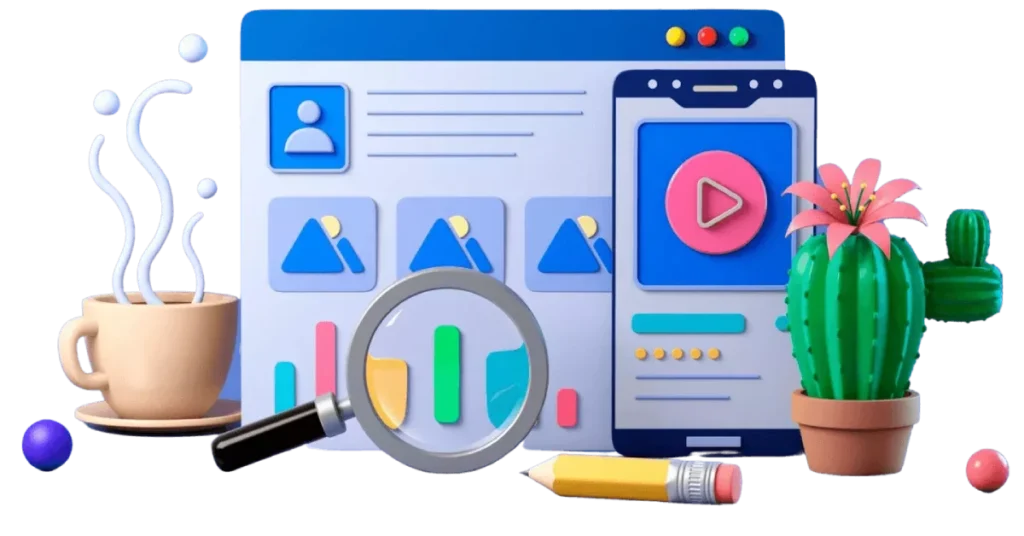Introduction
The way we find information online is changing fast, and SEO GPT is at the heart of this shift. We’re seeing artificial intelligence (AI) infiltrating every corner of the internet, particularly in search. As an SEO expert, I understand that staying ahead requires understanding how tools like Generative Pre-trained Transformers (GPT) work and utilizing them effectively. This guide will walk you through what SEO GPT means for you, how it can boost your efforts, and what to keep in mind as we navigate this exciting new era.
Welcome to the AI Revolution in Search
You’ve probably noticed search results looking a little different lately. That’s AI at play. Google’s AI Overviews, for example, show us that search engines are no longer just lists of links. They are becoming intelligent assistants, understanding complex questions and providing summarized answers directly. This isn’t just a trend; it’s a fundamental change in how we connect users with information.
So, what exactly is “SEO GPT”? It describes using AI models like GPT to enhance your search engine optimization strategies. It’s about combining the power of advanced language models with proven SEO principles. This synergy helps us create better content, find more opportunities, and understand our audience in deeper ways.
We must embrace AI in SEO. Why? Because the search landscape is moving at an incredible pace. Google’s own AI is constantly learning, and if we want our content to be visible, we need to speak its language. AI tools help us keep up, making our work more efficient and our strategies more impactful. In this guide, I’ll show you how.
Understanding the Brains: How GPT Powers SEO

Let’s quickly look under the hood. GPT models are large language models. Think of them as incredibly vast libraries of text that have learned patterns, grammar, and even some common sense from reading billions of pages.
How do these models help with SEO?
- Natural Language Understanding (NLU): GPT helps us understand what people mean when they type a query. It goes beyond simple keywords to grasp the true intent behind the search. This is gold for figuring out what content users truly need.
- Natural Language Generation (NLG): This is where GPT creates text. It can write headlines, paragraphs, and even entire articles. But it’s not just about writing fast; it’s about generating relevant, structured content that appeals to both readers and search engines.
- Other Clever Tricks: GPT can summarize long texts, classify content into categories, and recognize specific entities (like names, places, or products). These capabilities are incredibly useful for everything from auditing your website to identifying content gaps.
Putting AI to Work: Practical SEO Applications

Now, let’s get into the nitty-gritty. How can we use GPT models in our daily SEO work?
Crafting and Enhancing Content: More Than Just Words
Many people think AI content is just about speed. Yes, AI tools write quickly. Organizations using AI writing tools report an average 59% reduction in time spent on basic content creation tasks, according to a Firewire Digital study from May 2025. But there’s a bigger picture. My goal is always to create content that’s genuinely valuable and truly connects with readers. This means going beyond simple generation.
- Building Strong Outlines: I use GPT to brainstorm comprehensive content outlines. I give it my main topic, target keywords, and competitor examples. It then helps me structure articles with relevant headings and subheadings, making sure I cover all essential points.
- Drafting Engaging Text: GPT can write initial drafts for headlines, meta descriptions, and even full paragraphs. This saves me hours. I then refine these drafts, adding my unique voice and insights.
- Optimizing Existing Content: I feed old articles into a GPT model and ask it to suggest ways to make them more topically authoritative. It helps me identify missing subtopics or related keywords I might have overlooked.
- Ensuring Quality and Trust: A big question often arises: “How do I make sure AI-generated content is accurate and trustworthy?” This is where your expertise shines. I always fact-check every piece of information AI provides. Google emphasizes E-E-A-T (Experience, Expertise, Authoritativeness, Trustworthiness). For my content to rank, it must show real human experience and expertise. I guide the AI with specific instructions, ensuring it pulls from credible sources (which I verify) and aligns with my brand’s voice. I also inject personal anecdotes or unique data that only I possess. This helps the content resonate, making it feel less like a machine wrote it and more like a helpful friend. Remember, you’re the editor and the expert, guiding the AI to produce its best work.
Digging for Gold: Keyword Research and User Intent
Keyword research is the foundation of SEO. GPT can supercharge this process.
- Brainstorming Keywords: I use GPT to expand my keyword lists, getting ideas for both broad terms and specific, long-tail phrases. I ask, “What questions do people ask about [topic]?” or “What related topics should I cover?”
- Understanding User Intent: This is crucial. I prompt the AI to analyze keywords and tell me if users are looking for information, trying to buy something, or searching for a specific website. This helps me tailor my content perfectly.
- Identifying Content Gaps: I provide GPT with a list of competitor content and ask it to find themes or questions they haven’t addressed. This helps me create unique content that stands out.
Behind the Scenes: Technical SEO Support
Technical SEO can feel daunting, but AI can lend a hand.
- Schema Markup Generation: I can ask GPT to generate JSON-LD schema markup for my articles, products, or FAQs. This structured data helps search engines understand my content better.
- Identifying Basic Site Issues: While it’s not a full site auditor, AI can help me brainstorm common crawl errors or indexing problems based on descriptions. I then use this as a starting point for a deeper investigation with traditional tools.
- Internal Linking Ideas: I provide GPT with my existing content and ask for suggestions on how to internally link related articles, improving my site’s structure.
On-Page Optimization and SERP Insights
- Analyzing Search Results: I use AI to quickly summarize the top-ranking articles for a keyword. This gives me a quick overview of what’s working and helps me understand the competition.
- Content Structure Suggestions: Based on successful SERP results, I ask GPT to suggest optimal heading structures and content layouts.
Local SEO on Autopilot (Almost!)
For local businesses, GPT can be a lifesaver. Many of the powerful AI techniques we’ve discussed for SEO can also significantly boost your local presence. To dive even deeper into strengthening your visibility in your specific area, be sure to check out my comprehensive guide on Link Building For Local SEO: 8 Ways to Rank Higher in Google SERP.
- Google Business Profile Descriptions: I prompt AI to write compelling and optimized descriptions for Google Business Profile listings.
- Localized Content: I ask it to generate content tailored to specific cities or neighborhoods, incorporating local landmarks or phrases.
- Review Responses: It can even draft polite and helpful responses to customer reviews, saving me time.
Smart Reporting and Analysis
- Summarizing Data: I use AI to condense lengthy performance reports from Google Analytics or Search Console, quickly pulling out key trends.
- Identifying Anomalies: I ask it to highlight unusual spikes or drops in traffic and suggest potential reasons.
- Actionable Insights: GPT helps me turn raw data into clear, actionable recommendations for my SEO strategy.
Advanced Moves: Mastering Prompt Engineering for SEO

This is where the magic truly happens. Writing good prompts is a skill, and it transforms how you use AI for SEO. It’s like learning to speak to the AI in a way that gets exactly what you need.
- The Art of Asking: I treat the AI like an intelligent intern. I give it clear instructions, context, and examples.
- Advanced Techniques I Use:
- Prompt Chaining: For complex tasks, I break them into smaller steps. For example, instead of “Write a blog post about running shoes,” I first ask, “Give me five subheadings for a blog post about running shoes,” then “Write an introduction for the first subheading.” This multi-step process yields much better results.
- Role-Playing: I tell the AI to “Act as a seasoned SEO consultant” or “You are a content strategist for an e-commerce brand.” This helps the AI adopt the right tone and perspective for its output.
- Iterative Refinement: I never accept the first answer. I give feedback. “Make it more concise,” “Add a call to action,” or “Focus more on [specific benefit].” This back-and-forth makes the AI’s output much stronger.
- Few-Shot Prompting: I often provide examples. “Here are three examples of great meta descriptions. Now write five more in a similar style.” This guides the AI to match my desired output quality.
- Constraint-Based Prompting: I set clear rules. “Keep sentences under 15 words,” “Include these three keywords,” or “Avoid jargon.” This ensures the AI stays within my guidelines.
- Building My “Prompt Library”: I save my best prompts. I categorize them for different SEO tasks – content ideas, meta tag generation, and keyword analysis. This saves me time and ensures consistency.
Bringing It All Together: Integrating AI into Your SEO Workflow

Using SEO GPT isn’t just about individual tools; it’s about how they fit into your overall strategy.
- Choosing the Right Companions: There are many custom GPTs and specialized AI SEO tools available. I choose tools based on their specific features, ease of use, and how well they integrate with my existing processes. For instance, some tools excel at content generation, while others specialize in technical audits.
- Designing Smart Workflows: I think about how AI can assist at each stage of my SEO work.
- Content Calendar: I use AI to brainstorm content ideas for my editorial calendar.
- Keyword Strategy: I incorporate AI into my keyword research, using it to find new opportunities and cluster topics.
- Content Creation: I use a hybrid approach: AI drafts, I edit and refine. This makes content creation faster and more scalable.
- Audits: AI can help me quickly identify patterns in large datasets during a site audit. For example, a small e-commerce business I advise started using AI to draft product descriptions. They went from writing 10 descriptions a day to 50, freeing up staff to focus on customer service and product photography. The key was a human review of every AI-generated description to ensure accuracy and brand voice.
- Teamwork: Human and AI Collaboration: I view AI as a powerful assistant. My team members are the strategists, the creative minds, and the ultimate decision-makers. We train everyone on how to use AI effectively, emphasizing that it’s a tool to enhance our work, not replace our critical thinking. This collaboration makes us stronger.
Measuring Success and Navigating the Bumps
We always need to know if our efforts are working. And it’s equally important to understand AI’s current limits.
Proving the Value of AI in SEO
How do you show that your AI initiatives are paying off?
- Key Metrics I Track:
- Content Production Speed: How much faster are we creating content? Studies show that businesses using AI writing software see an average 77% increase in content output volume within six months (Firewire Digital, May 2025).
- Ranking Improvements: Are our AI-optimized pages climbing the search ranks?
- Organic Traffic: Are we seeing more visitors from search engines?
- Conversions: Are these visitors taking desired actions, like making a purchase or signing up for a newsletter?
- Time Saved: How many hours did AI save my team each week? According to a recent study, 93% of marketers say AI tools save them time weekly (Search Engine Land, June 2025).
- Developing an Impact Framework: I define clear goals for each AI integration. For example, if I use AI for meta descriptions, I track their click-through rates. If I use it for content outlines, I measure how much faster my writers complete their drafts. This focused tracking helps me demonstrate tangible results.
Understanding AI’s Current Capabilities and How to Work Around Them
While AI is amazing, it’s not perfect. It’s like having a brilliant, but sometimes overly enthusiastic, junior colleague.
- Factual Errors and “Hallucinations”: AI can sometimes make up information or get facts wrong. I never publish AI-generated content without thorough fact-checking. This is non-negotiable. My process involves cross-referencing information with authoritative sources and ensuring any statistics or claims are accurate.
- Limited Real-Time Data: GPT models often have a knowledge cut-off date. For example, GPT-3.5’s knowledge might end in late 2021, and even GPT-4 has a recent cut-off (April 2024 for paid versions). This means they can’t always provide the freshest market data or current event details. I combine AI insights with real-time SEO tools and current news searches to get the most up-to-date picture.
- Ethical Considerations: Originality and Authenticity: There’s a conversation about whether AI-generated content can truly be “original” or “authentic.” My approach is this: AI provides the scaffolding; I provide the soul. I make sure my content offers unique perspectives, original research, or personal insights that only a human can provide. This moves the content beyond generic AI output. We also carefully check for unintentional plagiarism, as AI can sometimes synthesize information in ways that are too close to existing sources.
- The Risk of Generic Content: Without careful prompting and human refinement, AI can produce bland, uninspired content. I combat this by always guiding the AI with specific instructions on tone, style, and desired outcomes. I add my unique voice to ensure the content stands out.
- Bias in Training Data: AI models learn from the data they’re trained on. If that data has biases, the AI’s output might reflect them. I am aware of this potential and actively review AI outputs for any unintended biases, adjusting my prompts or content as needed.
- Key Takeaways for Managing AI Risks:
- Always Fact-Check: Verify every piece of information.
- Human Oversight is Critical: You are the editor, the strategist, the final authority.
- Focus on Value: Ensure your content offers unique value that AI alone cannot provide.
- Stay Informed: Keep up with AI model updates and best practices.
The Road Ahead: Future-Proofing Your SEO Strategy with AI

The future of search is intertwined with AI. What does this mean for us? The article “AI SEO Statistics for 2025” from SEOPROFY underscores the transformative role of AI in contemporary SEO and marketing. It notes widespread AI adoption among SEO professionals for task automation, emphasizing its benefits in improving marketing performance through enhanced data analysis, personalized customer experiences, and streamlined content creation. While acknowledging concerns like job displacement and misinformation, the piece concludes that AI’s advantages in understanding customer preferences and tailoring content outweigh the risks, contingent on careful human oversight of AI-generated material.
Google’s Shifting AI Space
Google is integrating AI more deeply into search, well beyond the initial AI Overviews. We’re seeing more personalized results and a focus on answering complex questions directly. Google’s own Gemini models are making search more intuitive. Think with Google reports that AI Overviews are already reaching over 1.5 billion users monthly across 200+ countries, making Google Search the leading product in bringing generative AI to people globally. They also note that early testers of AI Mode are asking queries two to three times longer than traditional searches.
This means:
- Task Completion: Search won’t just provide links; it will help users complete tasks. We need to optimize our content to be part of those task-completion flows.
- Multimodal Search: Voice and image search are growing. Our content needs to be ready for these new ways people search. For example, ensuring images are well-described and optimized.
The Rise of “AI-First” SEO
This isn’t about letting AI take over. It’s about designing our SEO strategies with AI as a core component from the start.
- AI as an Efficiency Partner: We use AI to handle repetitive tasks, freeing up our time for strategic thinking and creativity.
- Constant Learning: The AI world changes fast. We must constantly learn new prompting techniques and adapt to new AI models. This agility is a significant advantage.
Ethical AI Use in SEO: Building a Better Web
We have a responsibility to use AI ethically. This means:
- Transparency: Be open about using AI in your processes.
- User Value First: Always prioritize creating content that genuinely helps people, rather than just chasing rankings.
- Responsible Innovation: Stay informed about legal and ethical guidelines surrounding AI and data privacy.
Conclusion: Embrace, Adapt, and Excel
We’ve explored how SEO GPT tools are redefining search engine optimization. From supercharging content creation to revolutionizing keyword research and streamlining technical tasks, AI offers incredible potential.
My message is clear: Don’t fear the AI revolution; lead it. Embrace these powerful tools, learn to use them thoughtfully, and always maintain your human touch. Your expertise, creativity, and understanding of your audience are irreplaceable. When you combine your skills with the efficiency of AI, you create a powerful force that ensures your content stands out and truly connects in the evolving world of search. Start experimenting today. The future of SEO is here, and it’s exciting!




